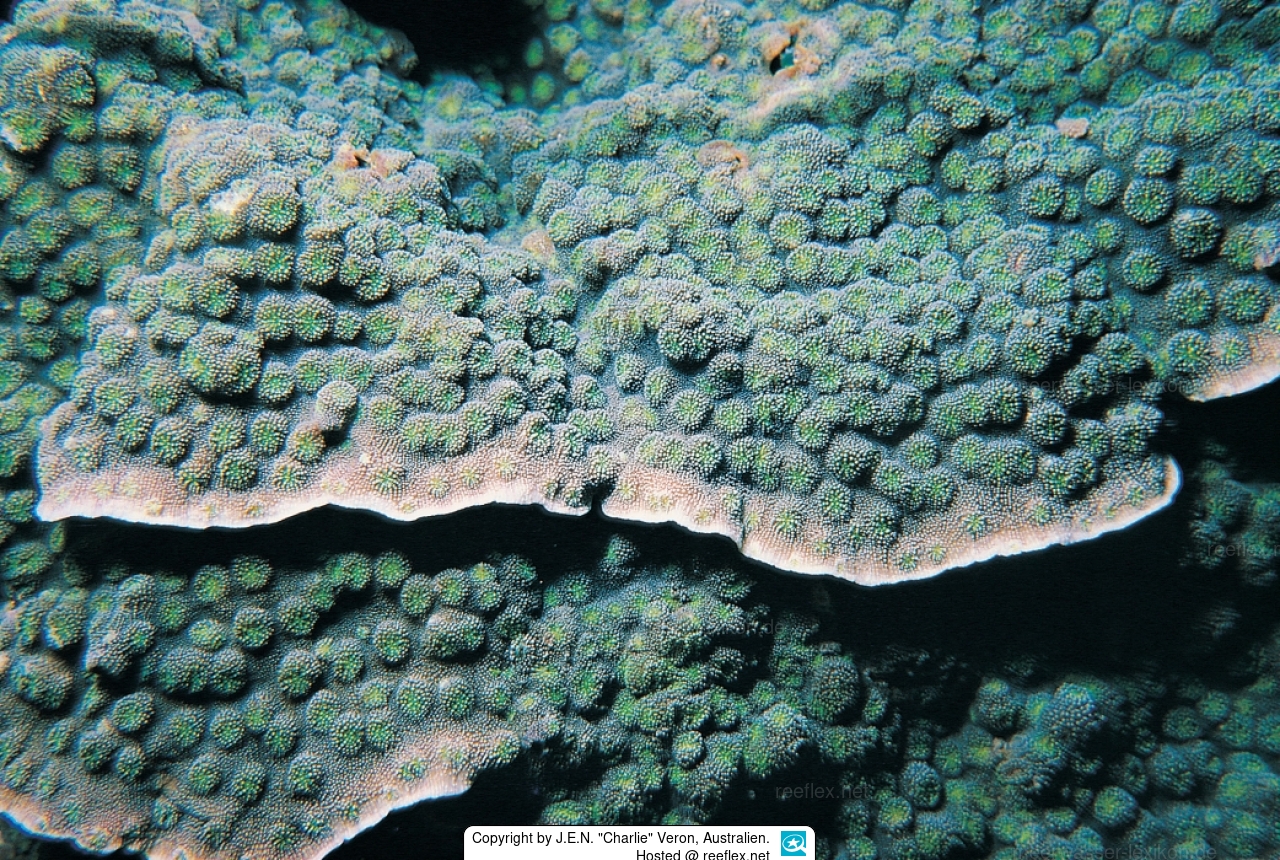Info
Echinopora pacificus
Veron, 1990
Characters: Colonies are usually unifacial plates with laminar margins and encrusting centres. Corallites are up to 10 millimetres diameter. Septo-costae are in two orders, the second seldom forming well developed septa. Septal teeth are exsert. Costae are beaded. Paliform lobes are not exsert. The coenosteum has tall spinules giving colonies a velvet-like appearance.
Colour: Green, yellowish or grey-brown.
Habitat: Most shallow reef environments.
Abundance: Usually uncommon.
Similar species: Echinopora lamellosa
Source reference: Veron (2000). Taxonomic reference: Veron (1990a). Additional identification guide: Nishihira and Veron (1995).
Classification: Biota > Animalia (Kingdom) > Cnidaria (Phylum) > Anthozoa (Class) > Hexacorallia (Subclass) > Scleractinia (Order) > Merulinidae (Family) > Echinopora (Genus) > Echinopora pacificus (Species)







 Dr. John Edward Norwood "Charlie" Veron, Australien, Australien
Dr. John Edward Norwood "Charlie" Veron, Australien, Australien













